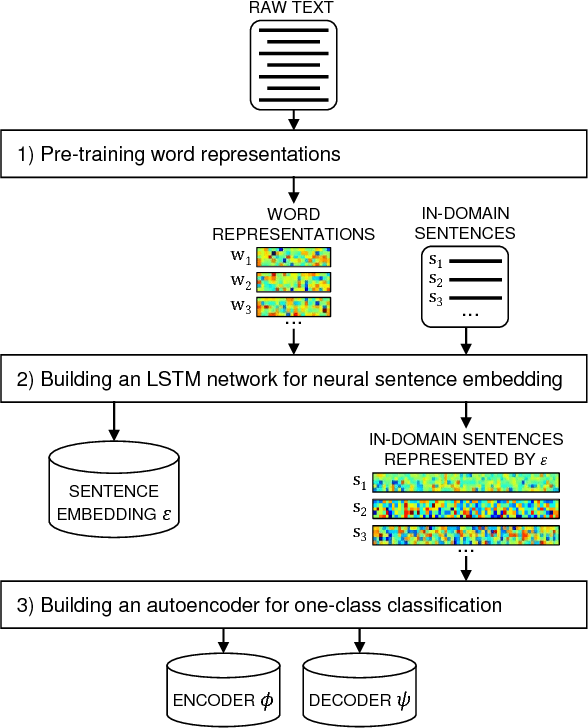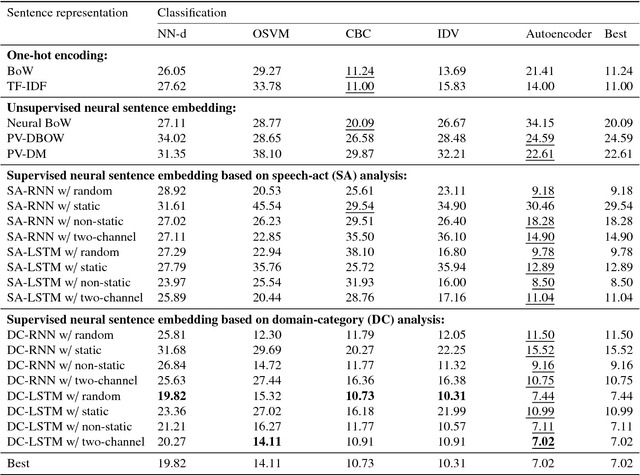Neural Sentence Embedding using Only In-domain Sentences for Out-of-domain Sentence Detection in Dialog Systems
Paper and Code
Jul 27, 2018



To ensure satisfactory user experience, dialog systems must be able to determine whether an input sentence is in-domain (ID) or out-of-domain (OOD). We assume that only ID sentences are available as training data because collecting enough OOD sentences in an unbiased way is a laborious and time-consuming job. This paper proposes a novel neural sentence embedding method that represents sentences in a low-dimensional continuous vector space that emphasizes aspects that distinguish ID cases from OOD cases. We first used a large set of unlabeled text to pre-train word representations that are used to initialize neural sentence embedding. Then we used domain-category analysis as an auxiliary task to train neural sentence embedding for OOD sentence detection. After the sentence representations were learned, we used them to train an autoencoder aimed at OOD sentence detection. We evaluated our method by experimentally comparing it to the state-of-the-art methods in an eight-domain dialog system; our proposed method achieved the highest accuracy in all tests.
 Add to Chrome
Add to Chrome Add to Firefox
Add to Firefox Add to Edge
Add to Edge